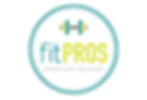
By Audrey Del Prete
We’re all familiar with the idea of work-life balance. It’s a term overused by companies when they attempt to describe their culture. It’s something that many of us strive for; the perfect balance of work and life.
The idea of work-life balance makes the assumptions that the workplace and home are physically separate, that work is primarily performed as an employee, and life and work are completely separate entities. Especially during the current climate of the world where we are all stuck at home, this is just not possible. Our kitchens, bedrooms, dining rooms have suddenly become our offices and for those who were not already successfully integrating their work and home life, this new normal has proved to be exceptionally challenging for both employees and employers.
Alternatively, the idea of work-life integration approaches that workplace and home life may be closely integrated physically or in terms of communication i.e. flexible work hours or telecommuting. Work may be performed on a contract basis rather than as an employee which is becoming increasingly popular in the new “gig economy”. Work-life integration considers the whole person with a focus on engaging total wellbeing, rather than looking at employees as merely “workers” while they are at work without consideration of the person’s needs outside of work.
Why shift to work-life integration?
Work-life integration is a synthesis likely to bring longer-term changes to a person’s wellbeing ultimately leading to higher job satisfaction, increased employee engagement, and lower turnover rates making this new normal of high interest to managers, HR professionals, and executives.
Given the shift due to the global pandemic, it is more important than ever for employers to embrace the integration of work life and home life. We are all experiencing the challenge of working from home with our new “co-workers” i.e. roommates, spouses, children, and pets. Why not take the time to normalize this experience? I was recently on a Zoom call where the speaker held his infant child in his arms for the entire 60 minute meeting. I say bravo to that. Instead of criticizing a parent when their children interrupt a meeting, invite an introduction of their children demonstrating not only that you recognize their personal experience, but you also appreciate what they are going through. Yes, we all want to try to maintain professional boundaries, such as not taking your video calls in your pajamas while still in bed, but employers have the opportunity to help employees normalize the integration of their personal and professional lives.
How can companies and managers begin to reframe the culture from balance to integration?
Work-life integration can be achieved when employers support all three of their employees’ human psychological needs as suggested by the Self-Determination Theory. The Self-Determination Theory is a framework for the study of human motivation and personality which poses three psychological desires humans need to thrive.
Autonomy - sense of wholeheartedness
Competence - sense of mastery
Relatedness - sense of belonging
Most people find their autonomous and relatedness selves in their home lives and their sense of competence at work. But if all three desires can be found together, it will lead to a more fulfilling life at work and at home and your employees will begin to thrive.
With this in mind, managers can begin to implement an integration by using the Work-life Management Model. The model uses the Acronym MANAGER to indicate the seven domains of Work-Life Management:
Mindfulness
Acceptance
Nurturing needs
Authenticity
Goals, actions, and time management
Environmental opportunities and threats
Responsibility
If managers can support employees’ needs in all seven of these areas, employees can start to feel a sense of autonomy, competence, and relatedness thus beginning an integration of work and life.
Managers can also use the Self-Determination Theory in regards to employees’ goals and motivation. The theory indicates four reasons, or motivations, that people have for reaching goals:
External - somebody else wants you to complete the goal or you’ll get something from somebody if you reach this goal
Introjected - you would feel ashamed, guilty, or anxious if you did not pursue the goal. You, not others, think you should or ought to strive for that goal.
Identified - you really believe that it is an important goal to have. Although others may have taught you this goal, you now endorse it freely and value it wholeheartedly.
Intrinsic - you strive for the goal because of the fun and enjoyment the goal provides you. While there may be good reasons to reach for the goal, the primary reason is your interest in the experience itself.
The fourth reason, intrinsic motivation, is the type of motivation we want all our employees to have, but intrinsic motivation cannot be reached without the buy-in of the manager and the company’s reframe of culture from work-life balance to work-life integration. Thus, it is important for managers to maintain a sense of enjoyment for their employees. Getting to know your employees and understanding their motivation for working for your company will only show your appreciation for them.
Looking for more?
Audrey Del Prete is a FitPro fitness instructor and health & wellness coach. With a background in Social Work for Businesses, she understands organizational psychology and has developed and facilitated training for employees and managers on conflict management, crisis intervention, and diversity & inclusion. Audrey is available to work with your employees one-on-one, as a group trainer, or as a corporate consultant. You can reach out to her via FitPros or at https://www.alwaysfitcoaching.com/.
References: Cavanagh, M., Grant, A.M. & Kemp, T. (2005). Chapter 7. Evidence-based Coaching: Volume 1-theory research and practice from the behavioral sciences. Bowen Hills, Qld, Australia: Australian Academic Press.

Want to learn more about FitPros or how to submit a blog? Contact FitPros email: hello@fitpros.com or
call: (815) 348-7767 Visit fitpros.com/emotionalfluency for more information on our campaign!

